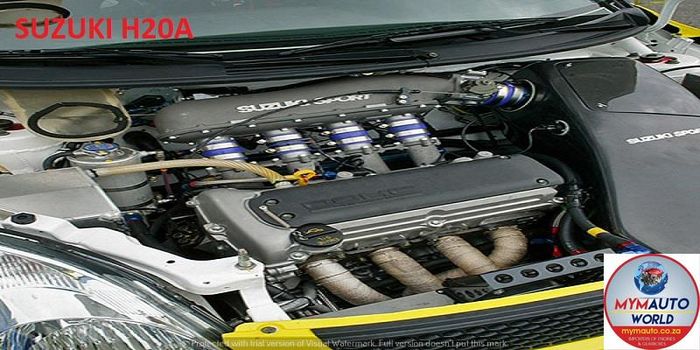Import Engines: Quality and Performance You Can Trust
Import Engines: Quality and Performance You Can Trust
Blog Article
Checking Out the most recent Technological Developments in Import Engines and How They Improve Driving Experience
In the realm of automobile design, the landscape of import engines is going through an extensive improvement driven by innovative technological technologies. From the development of turbocharged engines to the assimilation of crossbreed modern technology, the newest advancements are changing the driving experience in methods previously unbelievable. As import producers press the boundaries of performance and performance through improved fuel injection systems and advanced engine administration services, the concern occurs: Exactly how do these developments genuinely influence the way we interact with our vehicles when driving?

Evolution of Turbocharged Engines
In the automobile sector, the advancement of turbocharged engines has considerably changed the landscape of efficiency and effectiveness. Turbocharging, once primarily seen in high-performance cars, has currently become a mainstream technology taken on by a wide variety of lorries, from compact hatchbacks to luxury cars. The fundamental principle behind a turbocharged engine is easy yet efficient - by compeling even more air right into the burning chamber, it allows more gas to be shed, leading to boosted power output.
One of the key advantages of turbocharged engines is their capacity to deliver even more power from smaller sized, a lot more fuel-efficient engines. This downsizing fad has actually brought about a reduction in discharges without jeopardizing performance, making turbocharging an appealing option for car manufacturers aiming to fulfill strict ecological guidelines. Turbocharged engines supply enhanced torque at reduced RPMs, giving vehicle drivers with a more vibrant and responsive driving experience.
As technology remains to breakthrough, we can anticipate more innovations in turbocharging, resulting in even higher degrees of efficiency and efficiency in the auto industry.
Developments in Fuel Injection Equipments
With the constant progression of auto modern technology, considerable advancements have actually been made in gas injection systems. Modern fuel shot systems have developed to provide gas more efficiently and exactly into the engine cyndrical tubes, improving general engine efficiency and gas efficiency. One of the key advancements in gas injection systems is the change from standard port gas shot (PFI) to advanced direct fuel shot (DFI) modern technology. DFI systems inject fuel straight right into the combustion chamber at high stress, leading to better gas atomization and combustion, resulting in enhanced power outcome and lowered exhausts.
Moreover, the assimilation of digital control units (ECUs) and sensors in gas shot systems has actually allowed for real-time adjustments to sustain shipment based on numerous elements such as engine tons, temperature, and driving problems. Additionally, improvements in fuel injector style, materials, and spray patterns have actually contributed to cleaner combustion and smoother engine procedure.
Combination of Crossbreed Innovation
The development of fuel shot systems towards higher effectiveness and efficiency has actually set the stage for the smooth integration of hybrid modern technology right into modern engines. Crossbreed innovation integrates making use of typical interior combustion engines with electric propulsion systems, providing improved gas effectiveness and decreased emissions. By incorporating electric motors and batteries right into the powertrain, crossbreed engines can supplement the internal burning engine during velocity or low-speed driving, thus improving general efficiency.

Boosted Engine Management Solution
What visit here are the vital innovations in engine management systems that are boosting the performance and performance of modern engines? Engine management systems have gone through significant advancements to enhance engine performance and efficiency. One key innovation is the integration of advanced sensing units that constantly keep track of various specifications such as engine temperature level, air-fuel proportion, and exhaust emissions. These sensors supply real-time data to the engine control unit (ECU), permitting exact changes to be made to maximize combustion procedures and fuel efficiency.
Furthermore, modern-day engine management systems make use of sophisticated formulas and artificial intelligence to assess the data gathered by sensors and make dynamic changes to aspects such as ignition timing, gas injection, and turbocharger boost stress. This level of accuracy and versatility outcomes in boosted engine responsiveness, increased power output, and minimized fuel intake.
In addition, engine administration systems currently feature innovative diagnostic abilities that can identify and attend to issues such as misfires, sensor breakdowns, and fuel system irregularities in real-time, consequently improving total engine integrity and long life. These innovations in engine monitoring systems play a crucial duty in enhancing the driving experience by supplying ideal efficiency, gas efficiency, and reliability.
Effect of Lightweight Materials
Integrating light-weight materials in engine production has changed the automotive market's technique to boosting gas effectiveness and performance. The usage of materials such as carbon fiber, light weight aluminum, and titanium has actually substantially decreased the general weight of engines, leading to boosted power-to-weight ratios and enhanced fuel economic climate. These lightweight materials offer a greater strength-to-weight ratio compared to standard products like steel, allowing for pop over here better resilience without endangering efficiency.
Among the crucial advantages of using light-weight materials in engine construction is the decrease of inertia, causing quicker engine response times and enhanced general vehicle dexterity. Additionally, the lighter weight contributes to lower energy consumption, making cars more eco-friendly by reducing discharges.
Furthermore, the application of lightweight materials in engine elements such as pistons, attaching poles, and crankshafts has actually allowed designers to press the boundaries of efficiency without compromising dependability (import engines). This innovation has actually led the way for much more powerful and efficient engines that provide an exceptional driving experience while fulfilling rigid discharges criteria
Final Thought
In verdict, the most up to date technical technologies in import engines have actually substantially enhanced the driving experience. From the development of turbocharged engines to advancements in fuel injection systems, integration of crossbreed innovation, improved engine management systems, and the usage of lightweight materials, these developments have actually jointly improved efficiency, fuel effectiveness, and general driving dynamics. As modern technology remains to advancement, we can anticipate much more interesting developments in the future of import engines.
Modern fuel shot systems have actually developed to deliver fuel extra successfully and precisely into the engine cyndrical tubes, improving general engine performance and gas performance - import engines. By integrating electrical motors and batteries into the powertrain, hybrid engines can supplement the inner combustion engine during velocity or low-speed driving, consequently improving general performance
What are the vital innovations in engine administration systems that are enhancing the efficiency and efficiency of modern-day engines? Engine administration systems have gone through significant developments to enhance engine performance and effectiveness. From the development of turbocharged engines to improvements in fuel shot systems, assimilation of crossbreed innovation, boosted engine administration systems, and the use of light-weight materials, these innovations have collectively improved performance, gas performance, and general driving dynamics.
Report this page